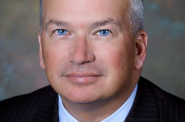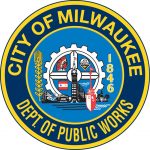Crisses Averted
Following is a joint Walker/Barret press release:
For more information contact:
County Executive’s Office- Steve Mokrohisky 278-4304
Mayor’s Office- Carlene Orig 286-8531
Barrett and Walker Announce Plan for Ballots in Milwaukee
Plan Guarantees that all votes are counted and all ballots are accounted for
Milwaukee…Milwaukee Mayor Tom Barrett and Milwaukee County Executive Scott Walker announced details of a plan to provide the additional ballots requested by the City of Milwaukee Election Commission while insuring that all of the ballots can be accounted for after the election. The two leaders made the recommendation to the Milwaukee County Election Commission.
Details of the plan:
The Milwaukee County Election Commission will print and provide 938,300 ballots to the City of Milwaukee Election Commission for the November 2, 2004 election.
- All of the unused ballots from each ward in the City of Milwaukee will be returned to the Milwaukee County Election Commission after the election. This will insure that the county can account for all of the ballots provided to the city.
- The Milwaukee County Election Commission will pay for a base-line allocation of 2,000 ballots per ward. This is in addition to the extra ballots the County Election Commission previously agreed to pay for, including: absentee ballots, additional ballots for high turn-out wards and sample ballots. The City of Milwaukee Election Commission will be financially responsible for an additional 500 ballots per ward if the total amount of ballots used does not exceed 2,000.
“This solution guarantees that all votes are counted and all ballots are accounted for,” says County Executive Walker.
Walker spoke with the head of the Milwaukee County Election Commission – Janice Dunn – on Friday and she confirmed that she and the three members of the commission approve of this plan. With that in mind, Dunn is working with the printer to begin printing ballots on Saturday. According to Dunn, the ballots should be ready next week.
“We are committed to running a clean and successful election,” stated Mayor Barrett. “This agreement allows us to give every eligible voter the opportunity to cast his or her ballot in what is expected to be a high voter turnout.”
Mayor Barrett met with the Executive Director of the Milwaukee Election Commission, Lisa A. Artison and City attorneys on Friday. They approve of the plan set forth by both Walker and Barrett.
Walker Press Release on Ballots
WALKER PROVIDES BALLOT FACTS
FOR IMMEDIATE RELEASE October 13, 2004
For more information, please contact:
Steve Mokrohisky or Fran Rudig at (414) 278-4211
Here are the facts:
The County Executive office had no involvement in the matter of ballots until the Mayor’s Office contacted them at the end of last week. They asked for assistance to push the Milwaukee County Election Commission staff to provide them with more ballots. Here are the facts:
- The City of Milwaukee asked for 938,300 ballots for the November 2004 election
- The Milwaukee County Election Commission proposed giving the city 574,105, but then increased that amount to a total of 679,500.
- The total population in Milwaukee: 596,974 in 2000 and 593,920 in 2004
- The total legal voting age population in Milwaukee in 2004: 423,811
- Total votes cast in 2000 fall election: 245,670
- Total votes cast in 2002 fall election: 141,351 (pre-registration of 335,889)
- Total votes case in 2004 September election: 94,643 (total ballots requested by City of Milwaukee: 841,357)
- Total number of pre-registered voters as of the September 2004 election: 382,737
The total number of ballots per ward printed for the City of Milwaukee for the 2004 election is 2,100. That represents 1,600 official ballots per ward plus 500 absentee ballots per ward. The unvoted absentee ballots are delivered to the polling place and can be used as a ballot on election day (if the other ballots run out).
In addition, the Milwaukee County Election Commission staff approved 1,000 extra official ballots in 22 different wards (as requested by the City of Milwaukee). Plus, 7 wards received 100 extra ballots, 4 wards received 200 extra ballots and 2 wards received an additional 400 ballots.
For the November 7, 2000 election, the City of Milwaukee had a total of 1,900 ballots per ward. That represents 1,700 official ballots and 200 absentee ballots.
In the City of Milwaukee for the 2000 election, 11 wards received another 150 ballots, 1 ward received another 200 ballots and 1 ward received another 400 ballots.
I am not denying the request from the city – as I don’t directly control the county election commission. We are raising concerns over their request and inviting all of the election officials in the county to attend a meeting on Thursday to talk about this and several issues. In addition, I want to make it clear that I am not against voter registration drives.
In fact, I co-chaired a Legislative Council with Sen. Gwen Moore several years ago (when I was in the State Assembly) that made it easier for people to vote.
My concern is simple, how does the number of ballots provided to the City of Milwaukee not cover them and why do they need so many more ballots? The county gave the city more than twice as many ballots as were cast in the city in the 2000 election and more than 200,000 more ballots than the total number of voting age people living in the city.
Walker Cries “Fraud,” Barrett Says “Phooey”
“I think the action of County Executive Walker is utterly ridiculous,” said Election Commission Executive Director Lisa Artison after a Wednesday afternoon press conference called by Mayor Tom Barrett.
Artison was referring to Walker’s refusal to grant the city’s request for 938,000 ballots – or about two for every one of the 423,811 persons of voting age in the city.
It wasn’t bad enough that the 679,000 ballots the county agreed to provide was less than the number printed for the presidential election in 2000 or the gubernatorial election in 2002. What particularly galled Artison and her boss Tom Barrett was that Walker implied that the excess ballots could be used fraudulently.
“What does this have to do with fraud?” Barrett asked, insisting the city will conduct the upcoming election, which he called “the most hotly contested presidential election in United States history,” honestly. Ald. Willie Hines said he was “insulted by the allegations of fraud,” by the County Executive, who is the co-chair of the Bush campaign in Wisconsin.
Ald. Willie Hines did not dance, however, and said “yes, it is a partisan” move. He claimed it is “an attempt to disenfranchise the central city. It is an attack on the city,” he said, calling the move “troubling” and accusing the County Executive and others of providing smoke screens for their actions.
Ald. Mike McGee, Jr., who was also present at the event with Ald. Ashanti Hamilton, said the move showed “outright disrespect of Scott Walker to our community,” and said it had elements of “Jim Crow” segregation. “I thought we were long past that time,” he added. He openly accused the Republican party of deliberately using the ballots as a strategy to limit central city voting.
Barrett said the large number of ballots were required for a number of reasons, and reminded the audience that the city ran out of ballots during an election 16 years ago.
An adequate supply must be on hand due to the very real possibility that this election will see record turnouts and election day registration.. Absentee ballots are being cast in record numbers this year, according to Artison, who said 11,743 absentee ballot requests had been processed this year, “and more are coming in every day.”
Barrett found it unusual that the county offered to print “one hundred fewer ballots than four years ago per ward.”
“The county started it,” he said, referring to the current controversy, which heretofore had been played out on talk radio.
“Why does the County Executive have a different standard for Milwaukee versus the suburbs?”
Barrett answered his question by noting that city voters are more likely to cast ballots for the democratic candidate.”
He raised a hypothetical example of a voter who would arrive at the polls shortly before closing to find no ballots remaining. The frustrated voter would very likely leave, he said, and a vote would not be cast, thus likely helping the Republicans.
“If anybody is denied the right to vote, they will not go to the county, they will blame the city,” Barrett said.
Asking for redundant ballots “either for more absentee ballots or more likely an unprecedented surge in voter interest,” is simply a matter of “good city planning,” Barrett said.
“For the first time we have been told that we asked for too many ballots,” the Mayor added.
“No questions were asked in 2002,” Barrett said. “There was no debate on the issue this spring when the County Executive and I were both on the ballot,” he added.
Barrett for Green Development
Mayor Tom Barrett has signaled his interest in sustainable building and development, according to Julilly Kohler, who met with him Monday, October 11th at City Hall. Sustainable development, or “Green Building” is an increasingly popular movement designed to limit the energy consumption of buildings and the waste associated with constructing them. Green policies also encourage reuse and adaptation of materials.
Barrett will announce a task force led by city planner and UWM School of Architecture and Urban Planning dean Bob Greenstreet that will work with various city departments and agencies to facilitate approval of green buildings.
The group will include plan examiners, city staff, and will have liaisons with the Milwaukee Metropolitan Sewerage District and other groups.
Cities like Chicago and Seattle have pioneered green initiatives, and work with such outside agencies as the US Green Building Council to create and certify compliant buildings.
In Milwaukee, developers who choose green construction could not be certain that plan examiners and other inspectors were familiar with green. The task force, for example, could train staff in green certification programs that have already been adopted by manufacturers and other groups.
Then, when a green project is proposed, staff would already be familiar with green procedures.
Recent green buildings in Milwaukee include Roots restaurant on N. Hubbard Street, and the recently-dedicated Urban Ecology Center in Riverside Park. A green house on Milwaukee’s south side, developed in conjunction with UWM, was dedicated last week.
SEWRPC Challenged
The Southeastern Wisconsin Regional Planning Commission is one of several such agencies in the state of Wisconsin. The high-minded idea, established in 1955, was that regional commissions could best help determine the future land uses of specific areas of the state. It was a baby step into intergovernmental cooperation.
According to the Wisconsin Blue Book, “regional planning commissions may conduct research studies; make and adopt plans for the physical, social and economic development of the region; advise local governmental units on regional planning problems; and coordinate local programs that relate to their objectives.”
Significantly, “commissions must adopt master plans for the physical development of the regions served.”
All of Wisconsin, except for six south-central counties are served by regional planning commissions. According to law, the Federal Highway Commission reviews the commissions work to see if the agencies merit recertification.
In the past, this was simply a rubber stamp measure, but on September 28, a number of citizens and officials spoke out against the agency, claiming it is a front for highway building interests.
The opposition was led by CASH – the Citizens Allied for Sane Highways, whose co-chair, former reporter Gretchen Schuldt made comments. She was joined by other citizens and officials including Ald. Bob Bauman, Ald. Michael Murphy and city planning director Bob Greenstreet. In fact, a sense-of-the-council brief, signed by all members of the Milwaukee Common Council opposing SEWRPC’s recertification was read into the record.
The full text of their comments, and live clips of selected testimony are available on the Story Hill Website.
Shuldt told the review panel that CASH was formed in 2002 in response to SEWRPC’s plans to expand freeways in Milwaukee. According to Schuldt, “while SEWRPC is trying to position itself as an honest broker in city-suburban issues, such as water, city residents are more likely to see it as an agent for suburban counties not interested in the city’s welfare as long as their own interests are served.”
Schuldt challenged the integrity of SEWRPC’s reports, saying “SEWRPC conducted an outrageously biased survey in an effort to shore up support for its expansion plan. Records and correspondence obtained from SEWRPC under the state’s Open Records Law show the cover letter to the survey was altered and a fact sheet removed after they were reviewed by a SEWRPC public relations consultant, but before they were sent to potential respondents.”
Schuldt noted that plans to expand I-43 to eight lanes would have required the removal and reconstruction of the North Shore Water Filtration Plant – a $60 million facility. According to Schuldt, “SEWRPC didn’t realize it was there, and didn’t bother to ask, according to Glendale City Administrator Richard Maslowski. SEWRPC’s failure to ask, as Maslowski put it, leads to a big question, ‘What else did they miss?’”
The Common Council’s letter noted that the city supports greater expansion of transit, rather than freeway expansion. Aldermen also raised concerns about SEWRPC’s study of the region’s water issues, which is certainly the most important political issue we face right now.
Also, the aldermen “take note that SEWRPC lacks minority representation on its board and among its senior staff, as well as representation from City government.
“The Commission consists of 21 members, 3 from each of the 7 member counties: Milwaukee, Waukesha, Kenosha, Racine, Walworth, Washington and Ozaukee. Yet, not one member is a minority and only 2 are female.
“SEWRPC’s demography clearly does not reflect our community’s diversity, and has consciously or unconsciously biased SEWRPC’s decision-making process.
“Finally, we believe SEWRPC’s governance is wildly imbalanced due to the fact that smaller counties, such as Ozaukee with a population of 83,555 wield the same influence as Milwaukee County with a population of 932,012. Milwaukee County taxpayers contribute a whopping 36% of SEWRPC’s budget in 2002, while Ozaukee County residents contributed 6.5%. This gross inequity necessitates reorganization of the current governance to reflect accurate representation of the region.”
Public comments on SEWRPC will continue to be heard until October 15.
The Milwaukee Journal Sentinel has not covered this important story – The Road Warrior is probably too busy counting traffic at some freeway ramp.
The other daily paper – The Daily Reporter, did cover the story in an article by Sean Ryan on Monday, October 4th.
This is a big story that deserves much more publicity.
For further information, and links, go to : http://www.storyhill.net/SHNAHoodHappenings.htm
Susan Mudd on SEWRPC
Our former first lady, Ms. Susan Mudd has also been weighing in on the SEWRPC issue. The following is from an e-mail she sent to friends, and asked to be distributed:
> Dear All,
> I know you have all experienced how destructive SWRPC’s plans for SE WIS have
> gotten in the last decade. Here at last is a chance to reform that agency.
> I believe ACLU is organizing this effort; info from their staff atty, Karyn
> Rotker, follows and more is attached.
> A couple of weeks ago, more than 50 people turned out for the hearing on
> SEWRPC’s certification as the regional planning entity. About two dozen
> people spoke, the overwhelming majority expressed very serious concerns about
> SEWRPC, if not outright opposing recertification. (We’ve gotten information
> that in 2001, the last time a certification review was done, only 2 people
> commented, both supporting SEWRPC.) So we think there is a shot at at least
> getting conditions put on their certification.
> It would be ENORMOUSLY helpful to have additional comments submitted in
> writing , and I’m wondering if you have any interest/ability in preparing
> something. These can address the process – who SEWRPC does or doesn’t include
> in its planning – and/or the substance (what issues SEWRPC should be looking
> at, but isn’t). I have a lot of background material and resources, if that’s
> helpful to anyone.
>
> Comments are due THIS WEEK (10/15); any you could do (and get anyone else you
> can think of to also) would be GREAT.
> thanks, Susan
Groundbreaking Set for Interchange
Our state’s largest public works project, the Marquette Interchange Project, (“Change your approach, not your destination,”) has been underway for several months now. In one fascinating bout of partial demolition, supports were braced beneath a freeway ramp between Wisconsin Avenue and Michigan Street, and then the original columns that had supported the ramp were cut away.
This is just a small example of the massive project that we will face for the next several years.
As of Tuesday, all of this work will be official, as Mayor Barrett and Governor Doyle haul out the golden shovels to officially break ground for the work.
It will be all part of a busy day for the mayor, as we note from his official schedule:
Tuesday, October 12
10:00-10:30 a.m.
Marquette Interchange Groundbreaking
Marquette University, Outside O’Hara Hall, 11th & Clybourn
(In the event of rain, location will be at Amtrak, 433 St. Paul Avenue)
Mayor Barrett and Governor Doyle will make remarks at groundbreaking ceremony.
11:00-11:30 a.m.
Press Conference
Parking Initiative
Mac Arthur Square Parking Garage
Mayor Barrett and other City leaders will unveil new parking equipment.
But, guess what! The event was cancelled at the last minute, and I was there all alone.
11:30-11:45 a.m.
Voter Participation Rally
Milwaukee Institute of Art and Design (MIAD)
273 E. Erie Street, parking lot across MIAD
Mayor Barrett will stress the importance of voting.
Also at the event was Gwen Moore, who welcomed Rep. Lena Taylor, “soon to be Senator!”
Moore, “soon to be Representative,” is a chess player, the students learned. She said in chess you “have to see 4 or 5 moves ahead. If you play me and you can only see one move ahead, you’re going to lose.”
“One of the things at risk on November 2nd is the potential for new justices on the Supreme Court. That’s two moves ahead,” she said.
She also referred to “the illegitimate war in Iraq,” and gave an admittedly sexist analogy.
“Let’s say you are driving in a car with a guy in a blizzard. ‘Honey, pull over and go to a hotel.’
Bush, too is staying the course in the war, she said.
After the speech I asked Moore what committee she would like to be on when she gets to Washington, not that she has much choice in the matter as a freshman democrat.
“I would like the appropriations committee. I have the credentials for it – I have finance committee experience. They can put a freshman on it if they want.”
Whatever her assignment, Moore will probably get a lot of face time on C-SPAN. She’ll be the woman talking alone in the great hall of congress, likely, but she will be a far more amusing and powerful speaker than anybody in the state’s current delegation. This should be a delight to witness.
More Interesting News
Bruce Murphy, formerly of milwaukeeworld.com has spent time lately at the Milwaukee Journal Sentinel where he specializes (as usual) in simplifying complex stories and reducing them to a few ten thousand words or so.
This week he has a four-part series in the paper on excessive executive compensation. It is a textbook example of investigative journalism, including making his point accessible to the average reader.
He did this by comparing executive pay to workers’ pay, and found that if the compensation for ordinary workers over the past decade had risen at the same rate as executives, the minimum wage would be $45 an hour. Now that’s a number people can relate to. … The Lake Michigan Federation will host “Lake-Toberfest!” Thursday, October 14th from 5:30 – 7:00 p.m. at the Milwaukee Environmental Consortium, 1845 N. Farwell Avenue. … Zeppos & Associates will celebrate its 10th anniversary in the public relations business with an open house at its offices on October 25th. …
(updated October 15, 2004)
Political Contributions Tracker
Displaying political contributions between people mentioned in this story. Learn more.
- November 3, 2015 - Tom Barrett received $400 from Julilly Kohler
The Roundup
-
Conservative Power Rises in Senate
 May 18th, 2015 by Steven Walters
May 18th, 2015 by Steven Walters
-
Buffett Tour on Hold
 Jun 27th, 2005 by Michael Horne
Jun 27th, 2005 by Michael Horne
-
Museum’s Wish List
 Jun 20th, 2005 by Michael Horne
Jun 20th, 2005 by Michael Horne



















